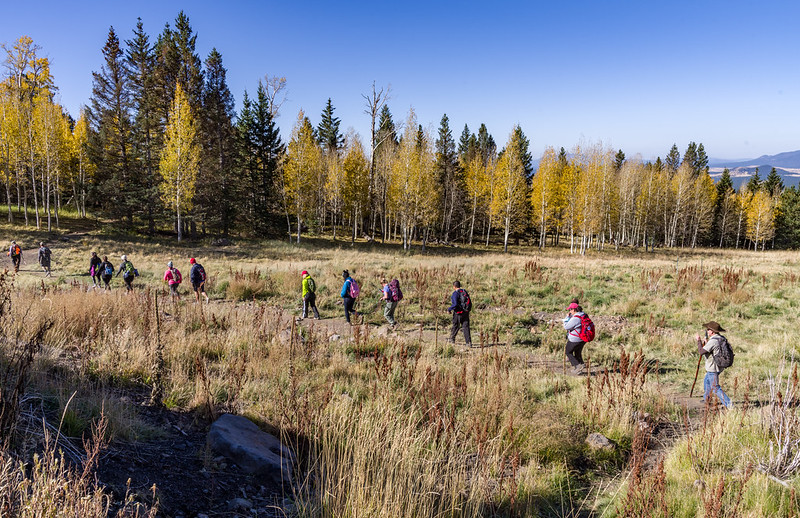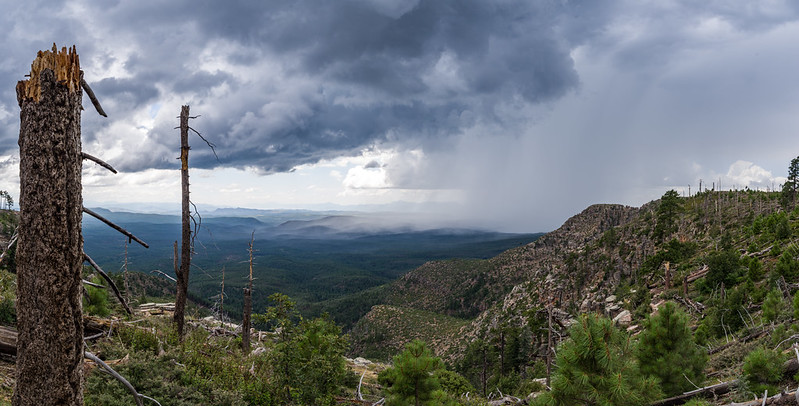Plan Ahead
When planning any outdoor adventure, it's essential to research the area you are visiting and plan for possible emergencies. The following guidelines are important to keep in mind when planning the trip and while on the trail.
 Most backcountry water sources on the Arizona Trail are not potable and should not be consumed without treating or filtering. Contact local land managing agencies for current water conditions. Always plan for the prospect of water sources being dry. Carry more than you need. Always carry two water filters in case one fails. Electrolytes will help your body tolerate heat and maintain balance when most of your H2O intake is excreted as sweat. Inform yourself about avoiding dehydration.
Most backcountry water sources on the Arizona Trail are not potable and should not be consumed without treating or filtering. Contact local land managing agencies for current water conditions. Always plan for the prospect of water sources being dry. Carry more than you need. Always carry two water filters in case one fails. Electrolytes will help your body tolerate heat and maintain balance when most of your H2O intake is excreted as sweat. Inform yourself about avoiding dehydration.
Expect the Arizona Trail to be colder, hotter, dryer or wetter than you expected! Weather can be unpredictable, especially in the mountains, during monsoon season and in winter/spring. Carry appropriate clothing to avoid exposure. In snowy years, such as 2019, hikers encountered deep snow and ice in the mountains beginning just a few miles from the southern terminus of the trail.
Avoid the desert regions during the hottest months of the year. Temperatures can be so hot that a human cannot drink enough water to survive, even if it is available. Sun protection is essential. Always carry electrolytes. A broad-brimmed hat or solar umbrella will keep you from getting sunburned and keep your body cooler.
Even well built and maintained trail can be difficult and challenging in the steep, rugged terrain of Arizona. Sturdy and well-fitting footwear and good socks will make the difference between a good trail experience or a miserable one. Always break your boots or trail shoes in before your through-hike. Try them out in steep terrain to make sure they do not crowd your toes. Take blister protection and apply it as soon as you begin to get a hot spot.
When planning your through-hike, communicate with others to learn from their experience. Follow other trekkers on social media to find out what to expect and what you should take when you make your trip.
Arizona is an arid environment with temperature extremes, sometimes unpredictable weather, and rugged terrain.
- Tell someone where you are going when you expect to return and what they need to do if you don’t return. For safety don’t hike alone and bring a map.
- Cellular phones often have sporadic or no reception in some areas of the Arizona Trail.
- If you get lost or become disoriented, stay calm and stay put! Wait for help to arrive.
- Keeping warm is more important than finding food and water.
- As a last resort, follow a drainage or stream downhill. This will often lead to a trail or road.

Storms form quickly in the mountains. Lightning storms are common in the summer, and snow can occur year-round at higher elevations. During the monsoon season, flash floods will occur. Follow the following guidelines to stay safe in a storm.
- Avoid hiking in washes (dry riverbeds) when thunderstorms are occurring anywhere nearby, especially uphill from you.
- Do not try to cross a flooded road in your vehicle under any circumstances.
- Check the weather before heading out.
- Bring clothing for all weather conditions (raincoats, fleece, or wool.)
- Avoid afternoon summer storms by heading out early and getting off mountain peaks and high points before storms arrive.
- If you see a storm approaching, get off the high points or away from lone trees or large rocks.
- If you are caught in a lightning storm, remove your pack and crouch with your hands on your knees until the worst has passed.
- Use caution crossing or parking in dry streambeds and low areas: sudden storms may cause flash floods.
Additional Resources
- Safety during in Lightning Storms.
Additional Safety Information
- Southwest Fire Information
- Coconino National Forest Outdoor Safety
- Grand Canyon National Park Safety


